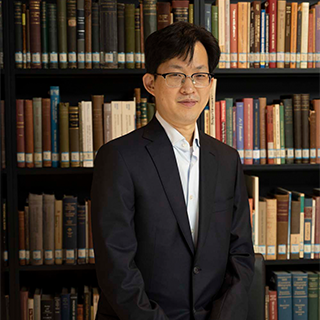One of the significant economic problems worldwide is the increasing concentration of wealth. The KAIST Herald interviewed Professor Hyung Seok Kim, who has recently provided a novel approach to resolving the fundamental problem of unequal distribution of wealth in his paper “The Macroeconomics of Stakeholder Equilibria”.

Q. Please briefly introduce yourself to the readers.
My name is Hyung Seok Kim, and I am a professor at the KAIST Graduate School of Science and Technology Policy. [Having] earned my Ph.D. degree in business cycle theory, I mainly research the correlation between the business cycle and economic growth, as well as the relationship between the volatility of the financial market and the business cycle. [Earning a Master’s Degree in Applied Mathematics] allowed me to learn diverse scientific models such as the Schrödinger equation, so I always wonder about the fundamental difference between the scientific and economic models from a philosophical perspective. Currently, I am writing a book named A Criticism for the Methodologies of Modern Economics regarding [this].
Q. Please explain the new model to resolve the unequal distribution of wealth in the paper “The Macroeconomics of Stakeholder Equilibria”.
As the current pattern of unequal concentration in wealth due to the centralization of capital owners resembles the crisis of capitalism predicted by Marx and Lenin, it is regarded as an obligation to suggest alternatives in capitalist economics. This paper presents a novel economic model to resolve this inequality. Like how the traditional freedom for profit maximization involuntarily violates the right for the happiness of the third person through the externality of environmental pollution, maximizing the benefit of the stakeholders during the concentration of the wealth can also involuntarily result in a new form of “externality” that involuntarily violates the right for the happiness of the workers. As this “externality” distorts the efficient allocation of resources in macroeconomics, the intensification of the inequality in wealth is considered an economic problem to resolve. Through the principles of the Coase theorem, this model aims to assign property rights through negotiation between the companies and workers. We believe that this model can reduce externalities due to centralization up to 60%, thus being more effective than the Coase theorem itself and demonstrating that the prediction of the crisis of capitalism by Marx is exaggerated.
Q. How can this model be applied to South Korea? What could be the limitations?
This model has clear policy implications: the benefit from the reduction in capital gains or corporate tax should lead to increasing the right for the happiness of the workers through long-term labor wage contracts for stability in the long-term income flow. Our model was derived under the assumption of [concentrated wealth, a declining population, and increasing capital productivity] due to the implementation of AI and automation, which coincides with the current economic situation of South Korea. [The social issue] of the over-concentration of students in medicine over other natural science and engineering fields is the result of a lack of [stable income flow]. This is a theoretical macroeconomic model [which assumes] that “the inequality in wealth can be resolved when everyone involved in the economic activities comply with the policy.” It will be crucial to observe how the “positivist prediction” of the model turns out when implemented.
Q. Can you give some advice to KAIST students?
The theories of modern economics are expressed through mathematical models. Actually, this paper [presents] a typical mathematical economics model that utilizes dynamic programming. Despite the similarity in the form, scientific and economic models are fundamentally different. Scientific models, such as the Schrödinger equation, fundamentally pursue “positivist prediction,” in which they have to be able to estimate the distance from New York to LA with an error of the width of human hair, according to Richard Feynman. However, economic models are a combination of normative and positivist predictions, in which the normative prediction that “the economic phenomenon will happen if everyone will comply with the model” will eventually lead to an increasing positivist prediction. If the students can understand the fundamental differences in the models, I believe that it can aid [them] in developing AI technologies that are prevalently used nowadays.

